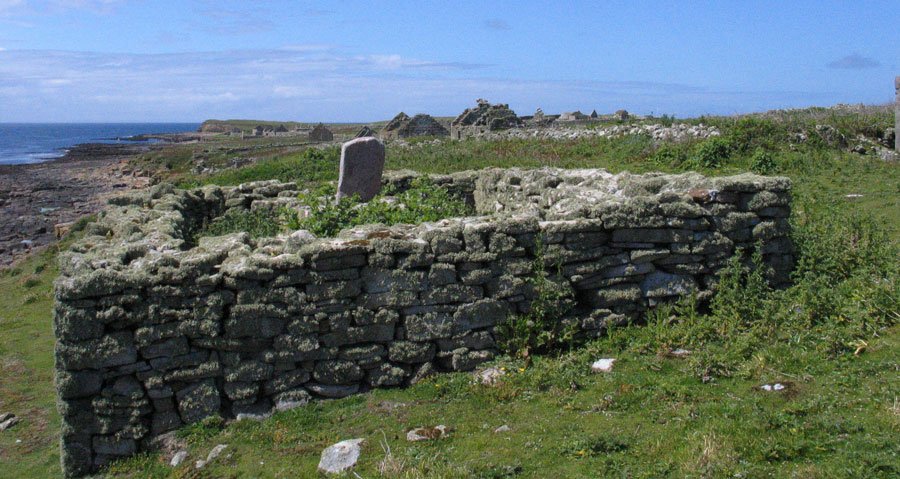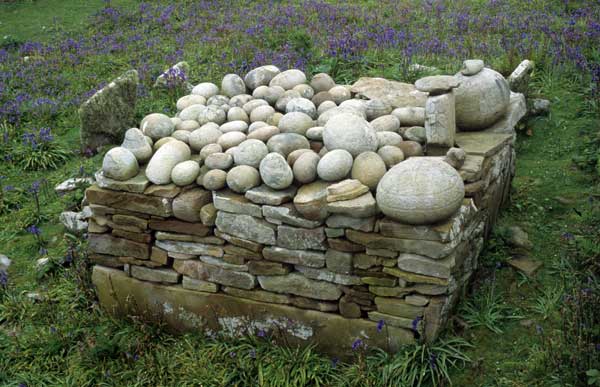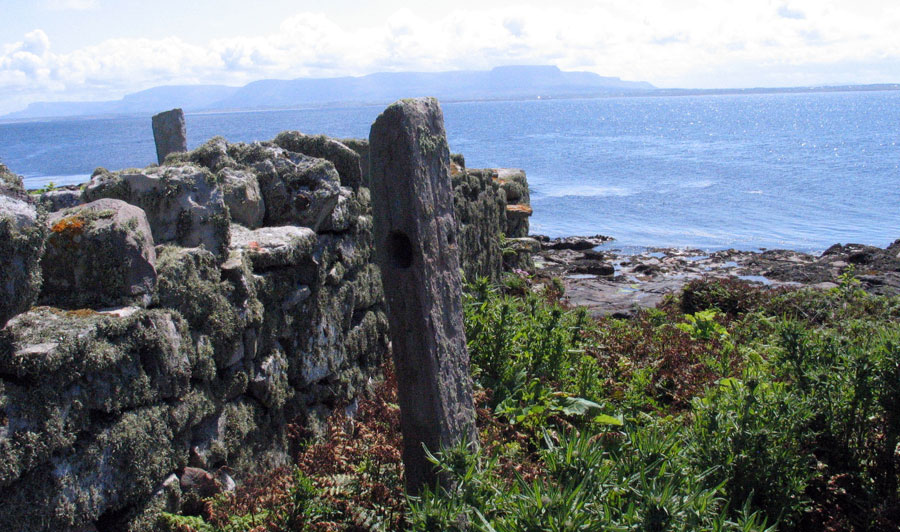As mentioned, the monastery is dedicated to St Molaise, a mysterious figure about whom we know very little. His name is said to mean 'My Little Flame' or 'My Little Calf'. Molasie may have come from Rossinver in County Leitrim, where a well with fine drinking water is still dedicated to him. He is also assiciated with the monastery at Devenish island in Lough Erne near Enniskillen.
The island is named after Muirdeach, a bishop of Killala, but not much information survives about him either. It is said that Columbkille came to Inishmurray to make his confession after the Battle of Cul Dremhnie (The Battle of the Books, said to be Europe's first known copyright case) between Benbulben and Drumcliff in Carbury around 555 AD.
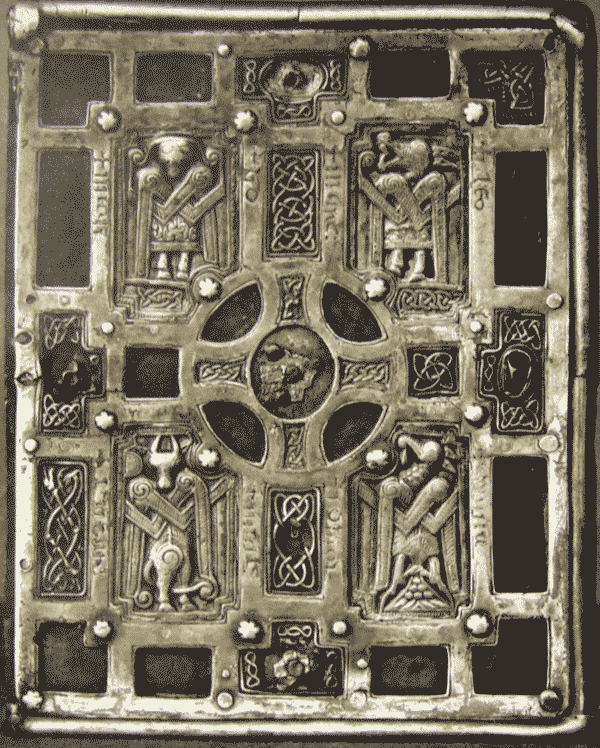
Local folklore says Columbkille sailed over to Inishmurray on a slab of stone, and there is a charming statue of him in his stone boat outside the church at Rathcormac on the mainland. Other versions say that Molaise met Columbkille at the Cross of Ahamlish (Atha Molaise) to the north of Drumcliff. Molaise decided that for his pennance, Columba should be exiled from Ireland until he had converted as many souls as were slain at Cul Dreimhne, and Columbkille departed Inishmurray for Derry and from there to Iona.
The wonderful oak statue of Molaise came from his chapel within the Cashel. It may once have held the bell and crosier said to have come from the island, which are currently in a private collection in England. They were sold off around 1840 by the notorious Roger Walker, the local landlord who lived on the east side of Knocknarea and who plundered and raided many of Sligo's monuments. One of the cursing stones is also in the collection at Alnwick castle.
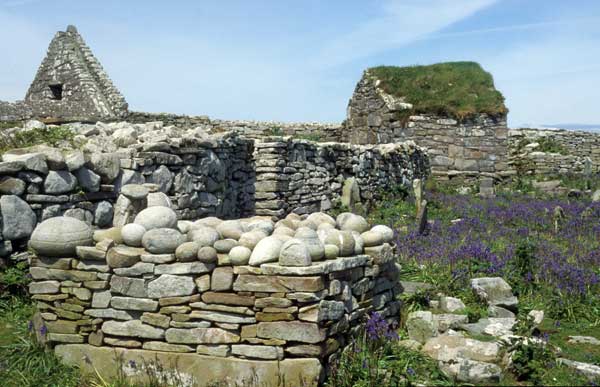
Monuments
There are several interesting buildings within the Cashel. The round stone beehive known as the Schoolhouse or Tory Bremnell, has a fine corbelled roof, was probably rebuilt by the Board of Works just before Wakeman arrived to document the monuments. The schoolhouse is a round corbelled chamber about 4 meters in diameter, with a stone bench running along the north side.
Connected by a drystone passageway to the schoolhouse is Teampaill na Tinne, the Church of the Fire. A cross is carved on the lintol over the doorway. Legend says an eternal flame was kept alight in the firepit within this building. The firepit can be seen today, built of four stone slabs.
Next door is Teach Molaise, the tiny chapel with the sod roof dedicated to Molaise, and probably the oldest building within the Cashel. Within this stone building was the oak statue, stationed to the left of the altar. Many graves and stone slabs are clustered around this small building.
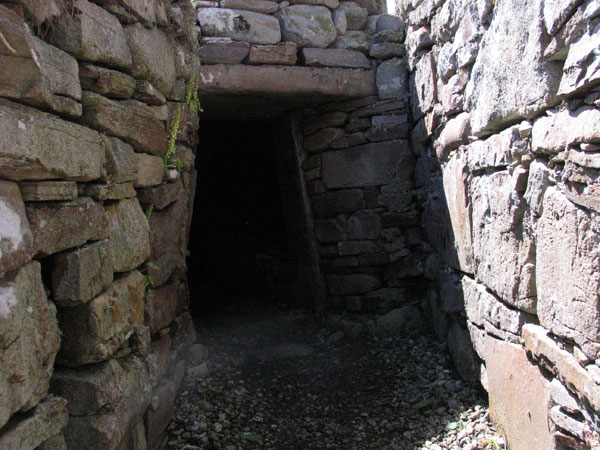
The island was inhabited until modern times, and the Cashel is surrounded by the remains of a village of some 15 houses which have been abandoned since 1948. It a strange and rather surreal site, with the dwellings so close together seperated by at least 1000 years in time.
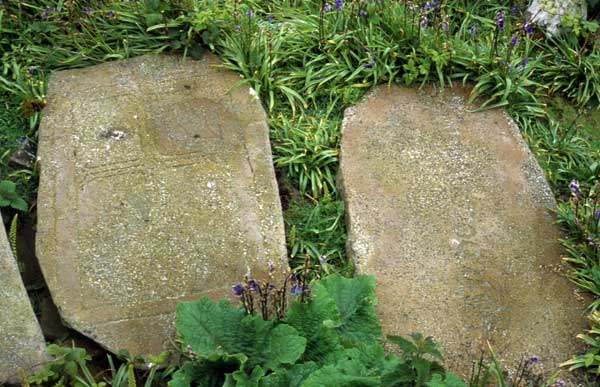
Arranging a trip to Inishmurray is very dependent on weather conditions.


